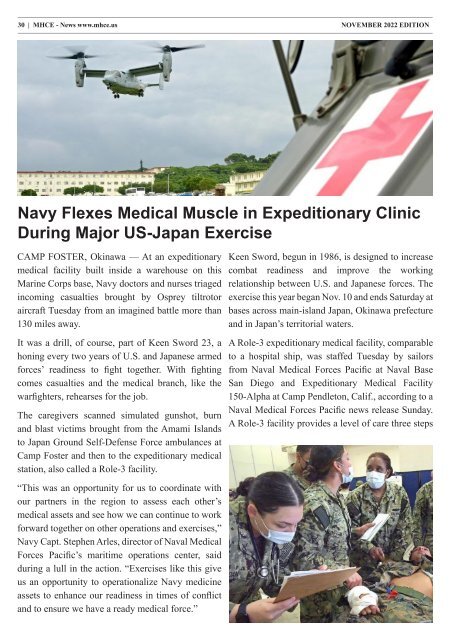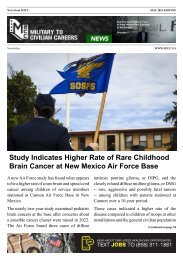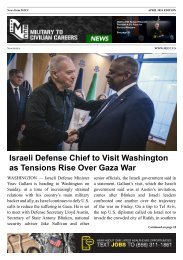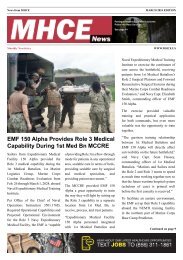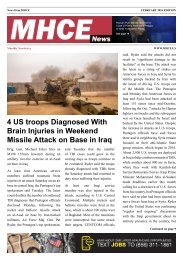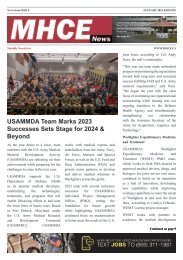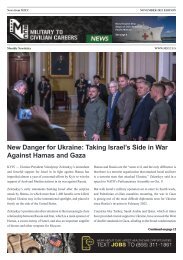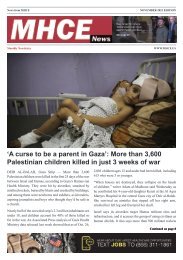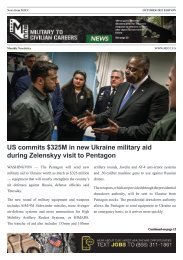November 2022 — MHCE Newsletter
You also want an ePaper? Increase the reach of your titles
YUMPU automatically turns print PDFs into web optimized ePapers that Google loves.
30 | <strong>MHCE</strong> - News www.mhce.us NOVEMBER <strong>2022</strong> EDITION<br />
Navy Flexes Medical Muscle in Expeditionary Clinic<br />
During Major US-Japan Exercise<br />
CAMP FOSTER, Okinawa <strong>—</strong> At an expeditionary<br />
medical facility built inside a warehouse on this<br />
Marine Corps base, Navy doctors and nurses triaged<br />
incoming casualties brought by Osprey tiltrotor<br />
aircraft Tuesday from an imagined battle more than<br />
130 miles away.<br />
It was a drill, of course, part of Keen Sword 23, a<br />
honing every two years of U.S. and Japanese armed<br />
forces’ readiness to fight together. With fighting<br />
comes casualties and the medical branch, like the<br />
warfighters, rehearses for the job.<br />
The caregivers scanned simulated gunshot, burn<br />
and blast victims brought from the Amami Islands<br />
to Japan Ground Self-Defense Force ambulances at<br />
Camp Foster and then to the expeditionary medical<br />
station, also called a Role-3 facility.<br />
Keen Sword, begun in 1986, is designed to increase<br />
combat readiness and improve the working<br />
relationship between U.S. and Japanese forces. The<br />
exercise this year began Nov. 10 and ends Saturday at<br />
bases across main-island Japan, Okinawa prefecture<br />
and in Japan’s territorial waters.<br />
A Role-3 expeditionary medical facility, comparable<br />
to a hospital ship, was staffed Tuesday by sailors<br />
from Naval Medical Forces Pacific at Naval Base<br />
San Diego and Expeditionary Medical Facility<br />
150-Alpha at Camp Pendleton, Calif., according to a<br />
Naval Medical Forces Pacific news release Sunday.<br />
A Role-3 facility provides a level of care three steps<br />
“This was an opportunity for us to coordinate with<br />
our partners in the region to assess each other’s<br />
medical assets and see how we can continue to work<br />
forward together on other operations and exercises,”<br />
Navy Capt. Stephen Arles, director of Naval Medical<br />
Forces Pacific’s maritime operations center, said<br />
during a lull in the action. “Exercises like this give<br />
us an opportunity to operationalize Navy medicine<br />
assets to enhance our readiness in times of conflict<br />
and to ensure we have a ready medical force.”


